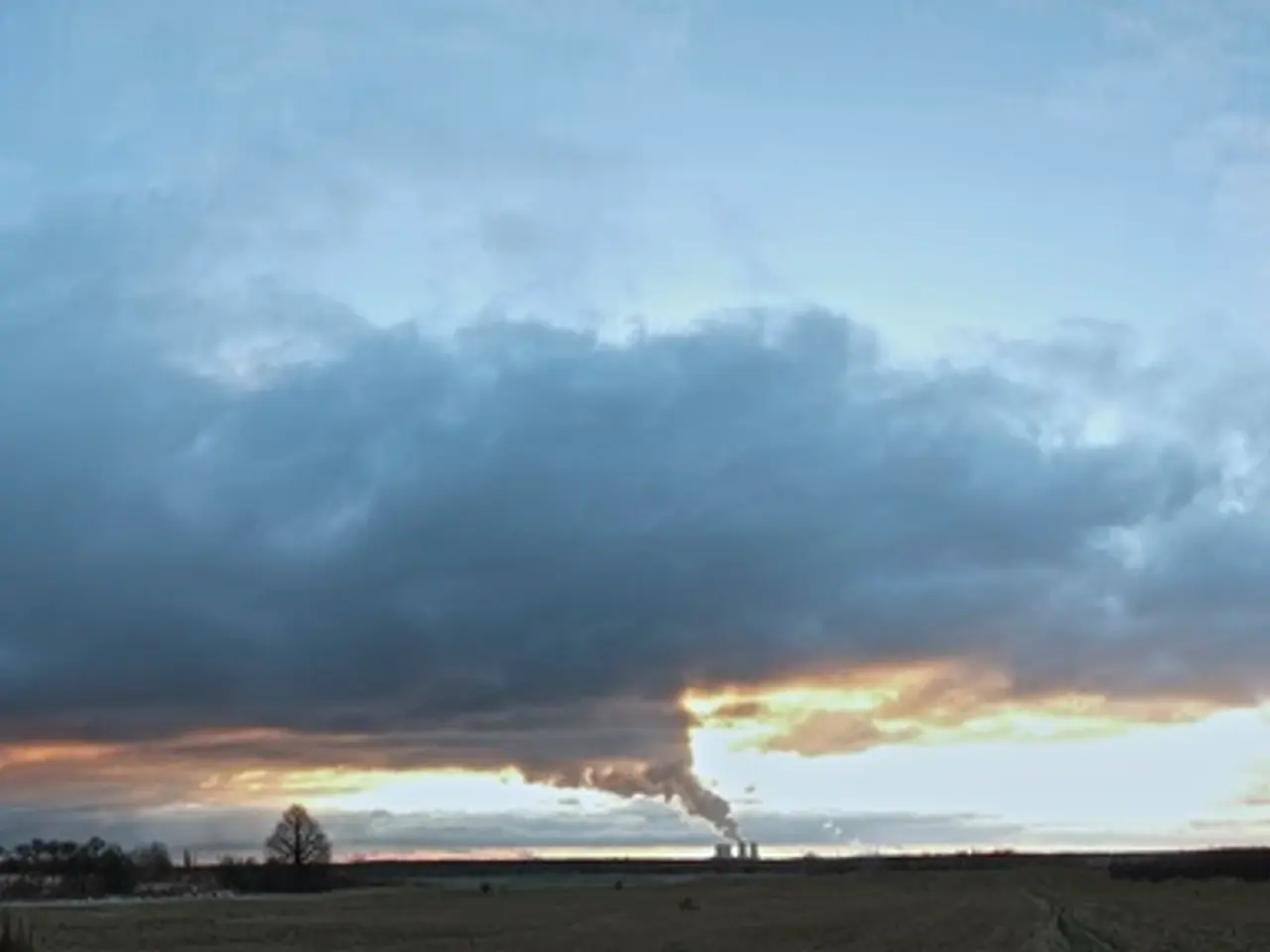Severe thunderstorm warnings are issued by Environment Canada as they help battle wildfires in British Columbia
British Columbia Braces for Severe Thunderstorms and Ongoing Wildfire Challenges
As the summer of 2025 progresses, British Columbia is facing a significant risk of severe thunderstorms alongside ongoing wildfire challenges. Environment Canada has issued numerous severe thunderstorm watches across the province, warning of storms capable of producing damaging winds, large hail, heavy rain, and possible funnel clouds [1][2][3].
These storms are driven by a potent Pacific low-pressure system bringing cooler air and unstable conditions [2]. The watches cover large swaths of the Interior, including the Okanagan, the Peace River region, and Prince George [4]. Meteorologists are tracking a storm capable of producing heavy rain and hail the size of nickels in Fort Nelson [5].
At the same time, wildfires remain active in multiple regions of B.C. The province is fighting over 130 active fires as of early August, with specific fires near Lytton and Bear Creek receiving evacuation orders and ongoing alerts [3]. The growing Cantilever wildfire has prompted an evacuation order for parts of Lytton First Nation, while an evacuation order has been issued for a fire burning north of Cameron Lake on Vancouver Island [6].
The Bear Creek wildfire has also closed campsites near Harrison Lake [7]. Although some rain and storms could provide relief, areas affected by fires continue to face smoke and poor air quality, with potential for increased fire activity if rain remains limited [3].
The BC Wildfire Service dashboard lists 146 active fires [8]. Residents are advised to monitor weather alerts and be cautious due to both storm threats and wildfire conditions. Drought Hill wildfire evacuees are on edge, waiting for the situation to improve.
Environment Canada lifted the heat warning in B.C., but multiple regions are under special air quality statements due to smoke [9]. As the province navigates these challenges, officials are urging residents to stay vigilant and prepared for any sudden changes in weather or fire conditions.
References: [1] Environment Canada. (2025). British Columbia severe thunderstorm watches. Retrieved from https://weather.gc.ca/warnings/index_e.html?prov=BC [2] CBC News. (2025). Pacific low-pressure system bringing cooler air, unstable conditions. Retrieved from https://www.cbc.ca/news/canada/british-columbia/pacific-low-pressure-system-bringing-cooler-air-unstable-conditions-1.6034990 [3] Global News. (2025). Severe thunderstorms, wildfires pose risks in B.C. Retrieved from https://globalnews.ca/news/8430439/bc-thunderstorm-wildfire-risk/ [4] CTV News. (2025). Severe thunderstorm watches issued for parts of B.C. Retrieved from https://bc.ctvnews.ca/severe-thunderstorm-watches-issued-for-parts-of-b-c-1.6033904 [5] CBC News. (2025). Fort Nelson under severe thunderstorm warning. Retrieved from https://www.cbc.ca/news/canada/british-columbia/fort-nelson-severe-thunderstorm-warning-1.6034993 [6] Global News. (2025). Evacuation orders issued for fires in B.C. Retrieved from https://globalnews.ca/news/8430439/bc-thunderstorm-wildfire-risk/ [7] CBC News. (2025). Bear Creek wildfire forces campsite closures near Harrison Lake. Retrieved from https://www.cbc.ca/news/canada/british-columbia/bear-creek-wildfire-forces-campsite-closures-near-harrison-lake-1.6034626 [8] BC Wildfire Service. (2025). Active fires. Retrieved from https://bcwildfire.ca/hprScripts/WildfireNews/ActiveWildfires.aspx [9] Environment Canada. (2025). Air quality statements. Retrieved from https://weather.gc.ca/airquality/pages/bc_airquality_e.html
- In light of the severe thunderstorms and ongoing wildfire challenges, environmental science plays a crucial role in predicting and mitigating these weather events, with climate-change research providing valuable insights on shifting weather patterns.
- As politics and policy decisions are made to address climate-change issues, general-news outlets keep the public informed about the risks and impacts of both severe thunderstorms and wildfires, emphasizing the need for preparedness.
- Simultaneously, officials in the crime-and-justice sector monitor for potential incidents related to increased wildfire activity and evacuations, ensuring a coordinated response to the multi-faceted crisesfaced by British Columbia.
- Accidents caused by severe thunderstorms can lead to power outages and property damage; therefore, meteorologists and utility companies work together to minimize the impacts of these events on the general population.
- Amidst the challenges posed by severe thunderstorms and wildfires, weather-forecasting services like Environment Canada continue to issue vital warnings and alerts, helping citizens prepare for and respond to these adverse weather events.








